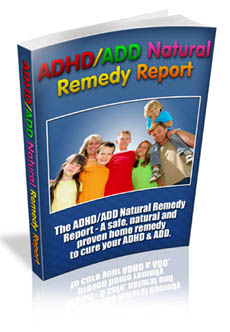How To Help With ADD
4. Reflective Thinking. The fourth goal involves helping children progress up the developmental ladder in terms of their ability to think. We help a child progress from thinking with actions all the way to reflective thinking. A reflective thinker can say, "Gee, this task is hard for me. I had better give myself some reminders." Reflective thinking allows people to know their own strengths and weaknesses and to plan ahead accordingly. This ability enables concentration, focus, and attention in all tasks of home and school.
5. Building Self-Confidence. For many who have felt helpless to control their attention and activity level, anxiety can cause them to be even more distractible and forgetful. When anxious about an assignment or homework, it's easy to play ostrich. As one child told me, "I just put it out of my mind and don't think about it; I just think about the tree outside. I think about what I'm doing now. I don't think about tomorrow. I don't think about the test." Problems in following instructions and paying attention can make a child feel guilty and incompetent, and any comprehensive approach must help a child feel effective and in control. How To Help With ADD
6. Improving Family Dynamics. Family dynamics play a large role, certainly in emotional coping, but also in the way we master each of these other abilities. Take, for example, reflective thinks. When a child is three or four years old and says, "Mommy; I want to go out," and Mommy says yes or no, it doesn't encourage thinking. But if Mommy or Daddy says, ``Why do you want to go out?" all of a sudden the child has to give a logical answer. She might say; "Because I want to play" "Well, why do you want to play outside rather than inside?" "Because the slide is outside." Some families do this naturally, and some don't. So the family component will be important here.
How well we sequence is also a function of family dynamics. The availability of Mom or Dad to be taken by the hand to the refrigerator or work with a child to set up an elaborate train set supports the ability to sequence and focus for longer periods of time. For a child, even a toddler, who is easily distractible, getting even more practice at sequencing and focus will help her learn to attend more effectively. The family dynamics, the patience of the parents, and the way they interact with their children can therefore play a significant role in a child's learning how to pay attention.
7. A Healthy Environment. The physical environment of the child is also critical. For example, for a child who is overreactive, an environment with a lot of noise and commotion is likely to lead to overload and a lot of distractibility. Also, we are discovering that toxic substances, not just lead, which is a well known toxin, but others called endocrine disrupters, along with still other substances that impair the functioning of the nervous system, can be in the diet and physical environment. This may include, for example, the impact of paint fumes or other products a child may either eat or breathe, which can cause more irritability or distractibility.
The Role of Parents and Caregivers
We will give examples of how parents and caregivers can help in each of these seven parts of a comprehensive approach. Here, we would like to mention a few general ways in which adults and children interact that can be significant contributors to attentional challenges, and how to make them more positive.
Some infants and children seem to communicate only in short, telegraphic bursts rather than in long chains of back-and-forth signaling. Some caregivers respond to these short, unrelated communications by becoming as fragmented as the child. They jump from one thing to another with the child rather than trying to sustain a long chain of interaction. Some become frustrated and just let the child play alone.
Other caregivers attempt to overcontrol the child, which can lead the child to become rigid. Such a child seems to focus, but it is not true, shared attention. There is no spontaneous dialogue, no real engagement on the part of the child. Forcing attention may lead to outbursts of anger or defiance that end any joint activities. Both a child's natural developmental differences and a caregiver's characteristics (including attentional difficulties in caregivers themselves) can contribute to this type of pattern. How To Help With ADD
The absence of consistent opportunities for communication and interaction with adults can lead children to become more self-absorbed or preoccupied with their own interests and seemingly inattentive to others. These same children, however, can be readily wooed into interaction and focus when engaged in a quiet environment, in a small group, with a patient parent or teacher. As we said earlier, what appears to be poor attention may also be related to anxiety and avoidance patterns. Chaotic families or harsh or judgmental ones can certainly contribute, and children can withdraw and seem depressed.
When a family and caregivers are giving the children many opportunities for regulation, interaction, and engagement, poor attention in children is then usually related to one or more underlying difficulties in processing sensations, in motor planning and sequencing, in thinking skills, and in the child's physical environment.
In working to strengthen each of these areas, certain general principles are useful. First of all, in playing with a child or engaging in a joint activity, the key is to join the child in his rhythm. If he is more active, try to move with him. If he is slower moving and seems to be more absentminded, get into a slow-moving rhythm with him. To learn more, you can check out How To Help With ADD.


